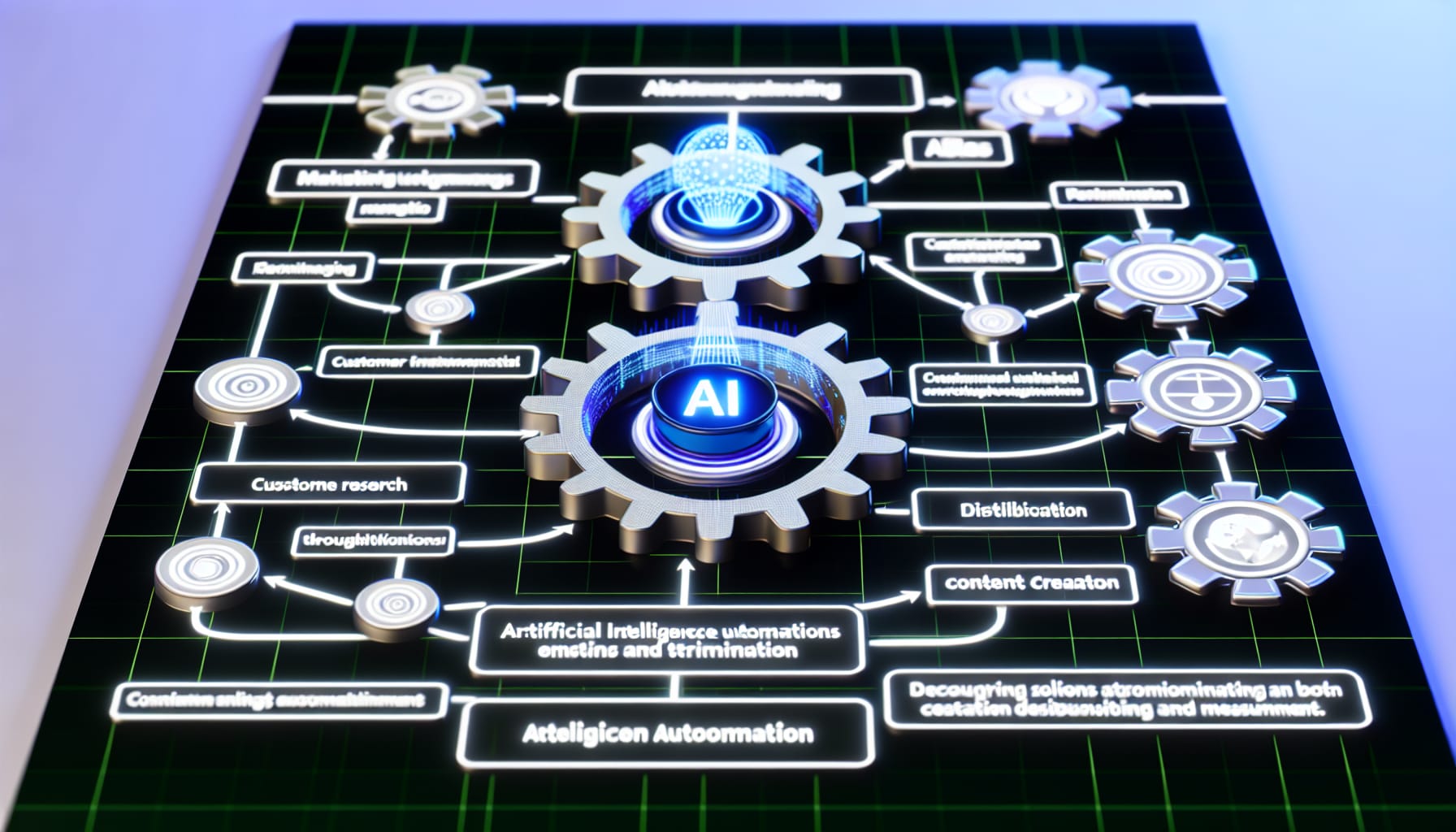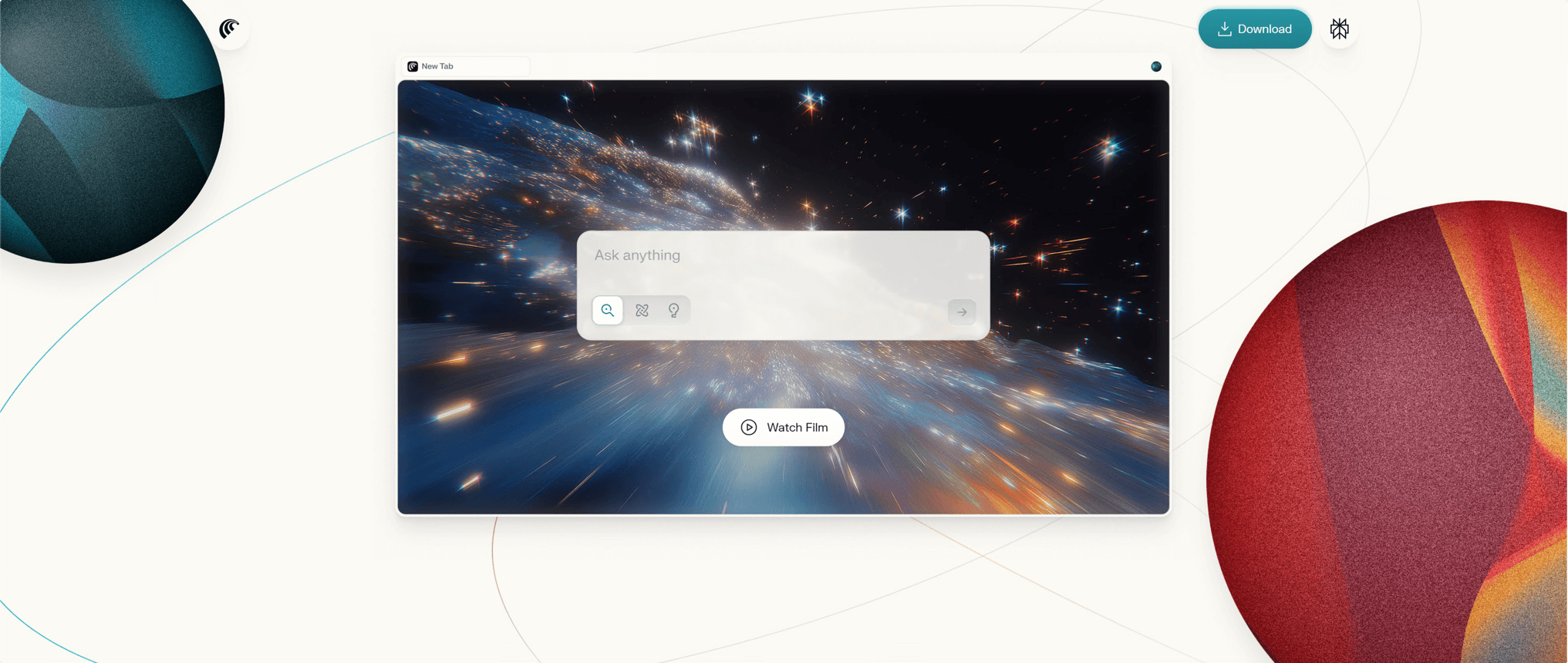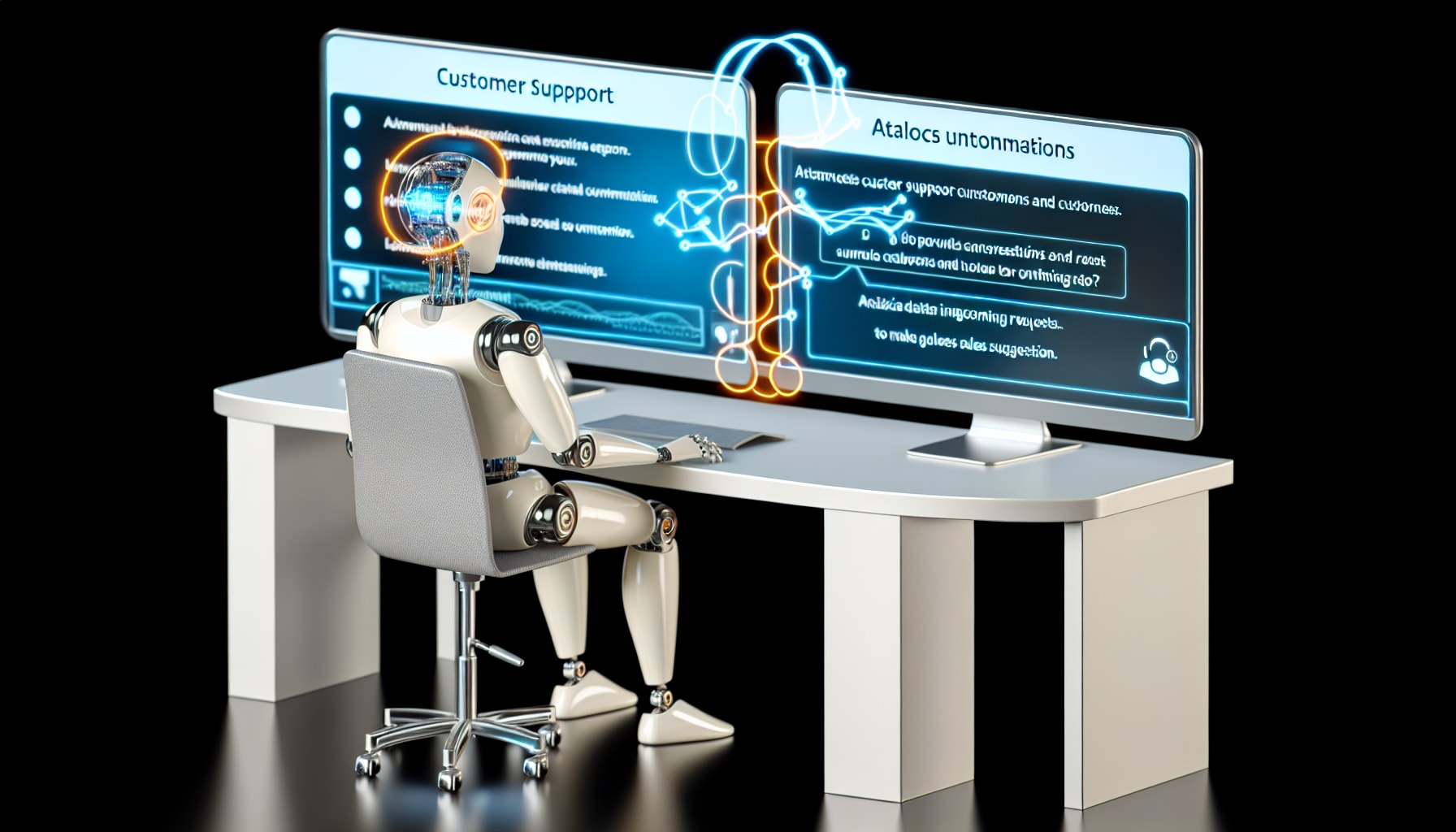The pressure on marketing teams is immense. You’re expected to manage more channels, produce higher-quality content, and deliver measurable results, all while navigating ever-changing digital trends. Juggling dozens of specialized tools for email, social media, SEO, and analytics can lead to fragmented workflows and data silos, making it nearly impossible to get a clear view of your customer’s journey. This is where the concept of an all-in-one AI marketing toolkit comes in. These integrated platforms consolidate essential marketing functions into a single, intelligent system, using AI to automate tasks, generate creative assets, and provide deep analytical insights. This article will explore how these toolkits are becoming indispensable for modern marketers and provide a practical guide to selecting the right one for your business.
We will break down how these comprehensive toolkits can transform your marketing efforts from the ground up.
How AI Tools Boost Marketing Efficiency and Automation
The daily grind of marketing often involves a mountain of repetitive tasks: sending follow-up emails, scheduling social media posts, and manually updating customer records. These activities, while necessary, consume valuable time that could be spent on strategy and creative thinking. AI-powered toolkits are designed to lift this burden by automating workflows and centralizing operations.
All-in-one AI toolkits streamline marketing by automating repetitive tasks, unifying lead management, and integrating communications across multiple channels.

Intelligent Marketing Automation
At its core, an all-in-one toolkit acts as a central nervous system for your marketing operations. Platforms like All In One Toolkit claim to reduce manual tasks by as much as 70% by automating entire sales funnels. This means you can set up workflows that automatically nurture leads from initial contact to conversion, sending personalized emails, SMS messages, and reminders at precisely the right moments without any manual intervention. This frees up your team to focus on building relationships and closing deals.
Customer Relationship Management (CRM)
Modern AI toolkits often include a sophisticated CRM at their heart. Instead of a static database, an AI-powered CRM, like the one integrated into the HubSpot customer platform, provides a dynamic, unified view of every customer interaction. AI agents can automatically log calls, update contact records, and even score leads based on their engagement, ensuring your sales and marketing teams are always working with the most up-to-date information. This unified view helps in delivering a more personalized and coherent customer experience.
Multi-channel Marketing Integration
A truly all-in-one solution brings your disparate marketing channels under one roof. Whether it’s email marketing, social media planning, or even a website chat widget, these platforms allow you to manage, execute, and track campaigns across all touchpoints from a single dashboard. For example, you can create a campaign that sends an email, follows up with an SMS if there’s no open, and then targets the same user with a social media ad—all orchestrated seamlessly within the toolkit. This level of integration is crucial for creating the consistent, omni-channel experience that modern consumers expect.
According to HubSpot, leveraging AI in digital marketing allows teams to “gain deeper insights into customer behavior, refine their marketing strategies, and effectively engage their target audience– all while saving valuable time and resources.”
This automation doesn’t just save time; it creates a more responsive and effective marketing machine. By handling the routine tasks, AI enables a level of personalization at scale that was previously unimaginable.
AI Solutions for Creative and Content Generation
In today’s fast-paced digital world, marketers and creators face increasing demands for high-quality visuals and seamless content creation. Enter the new wave of generative AI tools integrated directly into marketing toolkits. These features are transforming the creative process, making it faster and more accessible for teams of all sizes to produce professional-grade content.
Modern AI toolkits provide a suite of generative tools that produce everything from stunning visuals to on-brand copy, significantly accelerating the creative process.

AI-Powered Visual Creation Tools
High-quality visuals are no longer the exclusive domain of teams with large design budgets. Creative suites like the one offered by AdCreative.ai bundle powerful visual editing tools directly into their platform. Features like one-click background removal, image upscalers that sharpen low-resolution photos, and face enhancers for perfecting portraits empower marketers to create campaign-ready assets in minutes. This eliminates the need for multiple, costly subscriptions to standalone design software.
Copywriting and Content Generation AI
Writer’s block can bring a campaign to a halt. AI-powered writing assistants, such as those found in platforms like Jasper and HubSpot, serve as tireless brainstorming partners and copywriters. They can generate drafts for blog posts, social media captions, email newsletters, and ad copy based on a simple prompt. For example, HubSpot’s Campaign Assistant can create cohesive copy for an entire campaign—landing page, emails, and ads—from a single brief, ensuring a consistent message across all assets.
Multi-language and Brand Tone Customization
Maintaining a consistent brand voice is paramount for building trust. Advanced AI toolkits address this by allowing you to define your brand’s unique tone, style, and terminology. Jasper’s “Brand Voice” feature, for instance, learns from your existing content to ensure that every piece of AI-generated text sounds unmistakably like your brand. This capability extends to localization, enabling teams to translate and adapt content for global markets while preserving brand integrity.
As the team at Jasper notes, “speed should never come at the cost of authenticity.” Their built-in voice and tone insights help teams create content that is not only fast but also “resonant, consistent—and unmistakably you.”
These creative capabilities democratize content production, allowing smaller teams to punch above their weight and larger enterprises to scale their content output without sacrificing quality. The result is a more agile and impactful content marketing strategy.
The Role of AI in Data Analysis and Market Insights
In marketing, data is everything. But raw data is useless without the ability to interpret it. Marketers are often swimming in metrics from dozens of sources, making it difficult to see the forest for the trees. AI-powered toolkits excel at cutting through this noise, transforming complex datasets into clear, actionable insights.
AI-powered toolkits transform raw data into actionable insights, enabling marketers to track trends, understand customer sentiment, and optimize campaign performance in real-time.

Market Trend and Competitive Intelligence Analysis
Staying ahead of the competition requires constant vigilance. AI automates this process by monitoring the market for you. Tools like Browse AI can be trained to scrape competitor websites for pricing changes, new product launches, and customer reviews. This provides a real-time stream of competitive intelligence, allowing you to adapt your strategy on the fly rather than waiting for quarterly reports.
Social Media Sentiment Analysis
What are people really saying about your brand online? Manually sifting through thousands of mentions is impossible. This is where AI-driven sentiment analysis comes in. Platforms like Brand24 scour social media, blogs, and forums to aggregate brand mentions and analyze the emotion behind them. This allows you to quickly identify and address customer service issues, amplify positive feedback, and gain an unfiltered understanding of your brand’s public perception.
As one marketing expert from MarketerMilk points out, a key use of AI is for “sentiment analysis on social media to aggregate positive and critical product reviews.” This capability helps you “stay up to date with what rival brands are doing” and improve campaign ROI with better targeting.
Marketing Performance Tracking and Optimization
An all-in-one toolkit provides a unified dashboard for tracking key performance indicators (KPIs) across all your campaigns. AI takes this a step further by not just reporting the numbers but also offering suggestions for improvement. For instance, it can identify which ad creatives are performing best, suggest A/B tests for your landing pages, or use predictive analytics to forecast campaign outcomes. This turns analytics from a reactive exercise into a proactive tool for continuous optimization.
Key Considerations for Selecting and Deploying an All-in-One AI Marketing Toolkit
With a growing number of platforms claiming to be the ultimate all-in-one solution, choosing the right one can be daunting. The best tool isn’t just about having the most features; it’s about finding the right fit for your team’s workflow, technical capabilities, and business goals.
Choosing the right AI toolkit requires a careful evaluation of its usability, security protocols, and ability to integrate with your existing technology stack.

User Experience and Ease of Use
A powerful tool is useless if your team finds it too complicated to use. Look for platforms with an intuitive interface and a gentle learning curve. Many providers, like Hype AI, emphasize a user-friendly design that allows marketers to create high-quality content without extensive training. Before committing, take advantage of free trials and demos to ensure the platform feels like a natural fit for your team’s day-to-day operations.
Security and Data Privacy
When you consolidate your marketing operations and customer data into a single platform, security becomes paramount. It is essential to choose a provider with robust security measures. Look for platforms that offer enterprise-grade security, are compliant with data protection regulations like GDPR and CCPA, and are transparent about how they use your data. Providers like Jasper explicitly highlight their commitment to data protection and privacy as a core part of their offering.
Cross-Platform Integration and Extensibility
No tool exists in a vacuum. Your chosen toolkit must be able to communicate with the other software your business relies on. Check for native integrations with your existing CRM, e-commerce platform, or other essential tools. For more complex workflows, look for compatibility with integration platforms like Zapier, which can connect thousands of different applications. This ensures that your AI toolkit enhances your existing tech stack rather than creating another data silo.
As Shopify’s CEO Tobi Lütke noted in a memo to employees, leveraging AI tools is no longer optional for staying competitive. He encouraged all employees to experiment with AI to enhance productivity, underscoring the strategic importance of adopting these technologies across the business.
Ultimately, the goal is to find a partner, not just a product—a platform that can scale with your business and adapt to the ever-changing landscape of digital marketing.
Conclusion
The shift towards all-in-one AI marketing toolkits represents a fundamental change in how marketing gets done. By consolidating automation, content creation, and data analysis into a single intelligent platform, these tools are breaking down silos and empowering teams to work more efficiently and strategically. They handle the repetitive, time-consuming tasks, freeing up marketers to focus on what they do best: understanding customers, building brands, and creating campaigns that connect on a human level.
As we look toward 2025, these integrated solutions are no longer a futuristic luxury but a practical necessity for any business looking to achieve sustainable growth. If you haven’t already, now is the time to start exploring these platforms. Take advantage of the free trials and demos available to find the toolkit that best aligns with your team’s needs and begin building a smarter, more automated marketing future.
Tools like this won’t fix everything, but they can make things easier.
Sometimes, getting unstuck is just about removing one small barrier.
If this sounds useful to you, Feel Free to Explore the Tool
Here →









